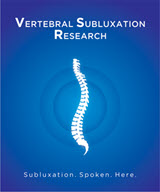Subluxation Deniers Publish Flawed Paper on Student Attitudes

In a paper titled "How frequent are non-evidence-based health care beliefs in chiropractic students and do they vary across the pre-professional educational years" published in the anti-subluxation "research" journal Chiropractic & Manual Therapies three subluxation deniers build a false narrative based on logical fallacies in their ongoing efforts to disparage the practice of traditional chiropractic. In their paper, Stanley Innes, Charlotte Leboeuf-Yde and Bruce F. Walker attempt to paint the philosophy and practice of traditional chiropractic (location and analysis of vertebral subluxation) as being non-evidenced based by quoting and referencing themselves and other subluxation deniers within their own paper.
The survey they performed was supposedly intended to discern the attitudes of chiropractic college students in Australia regarding how often they would give advice on five common health conditions in their future practices as well as their opinion on whether chiropractic spinal adjustments could prevent or help seven health-related conditions.
Innes is the current President of the College of Chiropractic and Osteopathy of Australia (COCA) which has a policy statement on the chiropractic care of children where they express:
“. . .concern with respect to chiropractors, osteopaths and others, who employ spinal manipulation when providing care for children with non-musculoskeletal conditions.”
The writing team on this paper also included Charlotte Leboeuf Yde, PhD a back pain researcher who has voiced her opinions about practicing outside the back pain box in numerous publications. Most striking is this comment about the need to SANITISE practitioners who veer outside her little “treatment” box:
"However, when I look at the rest of the world, I see a divergence developing, a deep cleft between those who are more or less knowledgeable and those who are not. This is not specifically typical of my own profession; I see it among physiotherapists, osteopaths and manipulating medical practitioners as well. Interestingly, this resembles what we see in public health in relation to life-style diseases. The healthy are healthier today than ten years ago and the unhealthy are even worse off than they were ten years ago. Therefore, we have a big task ahead of us, namely to sanitise those professions who deal with the conservative treatment of musculoskeletal disorders."
Leboeuf Yde has been routinely critical of chiropractors in her research papers suggesting that they do not have the skill nor the time to determine if the research they are reading is really promoting what she calls “illogical, imagination based procedures”.
Charlotte Leboeuf-Yde is a Senior Editorial Adviser of the journal Chiropractic & Manual Therapies where their "study" was published.
Bruce F. Walker is Editor-in-Chief of the journal of Chiropractic & Manual Therapies and Head of the Council on Chiropractic Education Australasia (CCE-Australasia) accredited chiropractic program at Murdoch University in Perth, Western Australia, and a Board member of the CCEA.
Here is a partial list of some of his concerns about chiropractic:
- Adherence to a flawed chiropractic ideology centring on innate intelligence and vitalism
- Claims of cures for visceral and other non-musculo-skeletal conditions
- Anti-vaccination propaganda
- Anti-drug and anti-medicine propaganda
- Anti-physiotherapy sentiments
- Misleading and deceptive advertising
- Open plan clinics where multiple people are treated in the same room fully dressed
- Unscrupulous contracts of care
- Over-servicing
- Obligatory full spine x-rays
- Use of the term “subluxation” as a valid diagnosis
- Unnecessary treatment of babies
- Biologically implausible diagnostic tests and therapies
- Unfounded claims of decreased immunity from “subluxation” and increased immunity from chiropractic treatment
- Life time chiropractic care in the name of “wellness”
- An unhealthy disregard of clinical research, evidence based practice, and non-specific treatment effects including natural history and the placebo effect.
Interestingly the Journal that published this paper (Chiropractic & Manual Therapies) has several known subluxation deniers on its Editorial Board Including:
- Bruce F Walker, Murdoch University, Australia
- Charlotte Leboeuf-Yde, University of Southern Denmark, Denmark
- Stephen M Perle, University of Bridgeport, USA
- Mitchell Haas, Western States Chiropractic College, USA
- Gregory N Kawchuk, University of Alberta, Canada
- Dave Newell, Anglo European College of Chiropractic , UK
Bruce Walker is the Editor of the Journal and an Associate Professor at Murdoch University. Another Murdoch University Instructor Keith Simpson has stated that there is "no credible evidence for subluxation based care"
Innes, Leboeuf-Yde and Walker surveyed 444 Australian chiropractic students and here are some of the things they were appalled to find.
- Students were highly likely to offer advice on a range of non-musculoskeletal conditions and this got "worse" in their final year.
- High numbers of students held non-evidence-based beliefs about ‘chiropractic spinal adjustments’ which also increased in the final year.
Innes et al state that: "Studies have shown the existence of aberrant chiropractic practice profiles which include anti-vaccination beliefs and excessive X-ray usage". They go on stating: "Further, these chiropractic practices consider ‘wellness care’ to be a main component of practice and treat a high number of asymptomatic patients for somato-visceral conditions". Casting judgement as they so easily and frequently do, the subluxation deniers state:
"This type of profile is considered ‘unsuitable’ within the context of contemporary evidence-based health care".
And just what is wrong with caring for patients in a wellness model or attending to an asymptomatic person who is also subluxated? According to these self proclaimed experts on chiropractic philosophy, science and art:
"These unsuitable practice profiles are based on beliefs which are not biologically plausible nor are they supported by available evidence. Some specific examples of this are beliefs that spinal manipulation can influence the immune system, improve Attention Deficit Disorder or somato-visceral conditions".
Referring to another study on attitudes of chiropractic students in North America Innes et al declare:
"80% of the students in that study believed that all patients should have lifetime chiropractic care. Clearly this profile is not in the best interests of patient safety, quality care, or public health."
Innes, Leboeuf-Yde and Walker consider chiropractic care in relation to these health issues to be ". . . biologically implausible, without any supportive evidence and therefore outside the scope of chiropractic practice, such as chiropractic spinal adjustments can prevent disease in general, help the immune system, make it easier to give birth and improve the health of infants."
What seemed to concern them the most was that the Australian students started off just like them - skeptical of the value of chiropractic beyond musculoskeletal pain syndromes but then by their final year these attitudes had changed. "In other words" they worte "a larger proportion tended towards the more non-evidence based approaches in their final year."
And not missing the chance to insult even more chiropractors, the reason they gave for this included:
"This could also be due to an ill-conceived bravado, overconfidence or a lack of clinical experience".
They also blame these "irrational beliefs" as they call them on "philosophy". Suggesting that its proponents deem it "superior to science and appears to act as a cognitive lens through which practitioners and students view, judge and reject the results from research evidence and guidelines".
The authors conclude by stating "New strategies are required for chiropractic educators if they are to produce graduates who understand and deliver evidence-based health care and able to be part of the mainstream health care system."

Blogs
- The Chiropractic Cartel: A Look Back at Bias in Accreditation and its Imact on Today's Profession
- Inside Montana's Chiropractic Monopoly: ACA & MCA's Brazen Board Takeover
- Concerns Grow About Control of the NY State Chiropractic Board by the ACA - Use of X-ray in NY Under Threat
- Reproductive Health Information and Chiropractic Care: Navigating New Privacy Regulations
- Navigating Substance Use Disorder (SUD) Consent: What Chiropractors Need to Know













